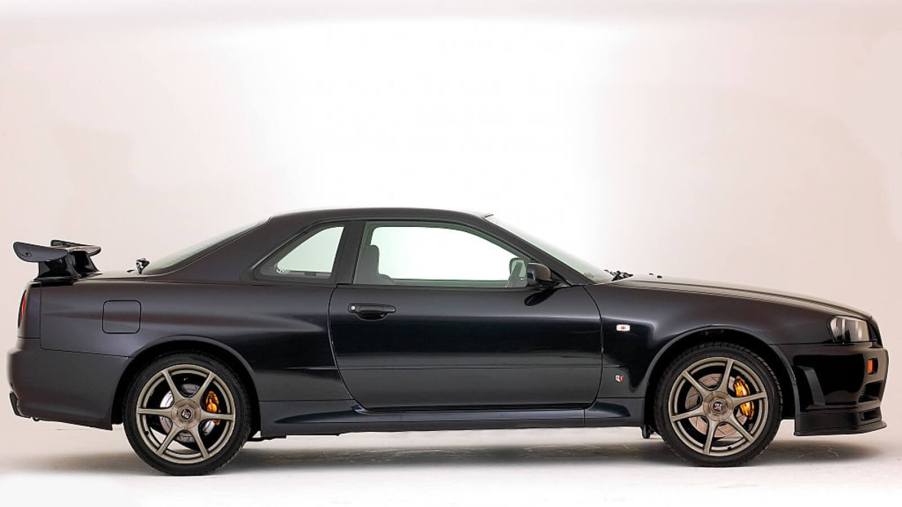
Why Do You Have to Wait 25 Years to Import a Foreign Car?
I’ve probably had “January 2024” written in my calendar since middle school. Why? Because this is the year the classic R34 Nissan Skyline turns 25 and is thus eligible to import to the U.S. But why do we have to wait so long to import a car here? There’s a fascinating history to our unique import laws, but they pretty much come down to corporate greed. Let me explain.

As recently as 1988, you could import a new or used car into the U.S.–from anywhere in the world. Want a JDM Land Cruiser? Just buy one and put it in a shipping container. Want a German luxury car with a manual transmission? Roll it onto the boat. What about a British motorcycle? Same deal.
There were caveats. You had to update the exterior lighting (i.e. turn signals) to meet U.S. guidelines. And this makes sense, U.S. drivers are used to U.S.-style signals. And by 1988 you had to install a catalytic converter if the vehicle didn’t already have one. But neither was a daunting procedure. In fact, there were import offices (often at existing dealerships) that could handle all of this for you, often for less than the tariffs on a regular car.
Then in 1989 that all went away. After extensive lobbying by Mercedes-Benz, alongside some other car makers, the U.S. passed a ban on importing any vehicle more than 25 years old.
The government claimed this was for safety reasons. And in their defense, Mercedes lobbyists had dug up some “gray market” imported cars with catalytic converters installed too close to the gas tank or with shoddy turn signal wiring. But the government and lobbyists accidentally tipped their hand and showed us that the entire law was just a money-grab. They didn’t pass any safety/modification laws for cars 25+ years old.
You’d think that if you want to import and register any old car, built from 1900 to 1999, you’d still have to add some turn signals and a catalytic converter. And you’d think, if safety was so important, you’d have to pay to have the work inspected by officials. But that’s not the case. You can import some 1920s Grand Prix car with no turn signals and run it on the road. You can get an old Army surplus diesel truck and smoke up Hollywood Boulevard. It’s all completely legal.
No other country shares our strange mix of strict laws (a 25 year import limitation) and permissive guidelines (no modifications required). To be specific, some countries have import limits, but none are 25 years.
Are you dreaming of importing a current-generation vehicle made exclusively for a foreign market? The reason you can’t comes down to some good old-fashioned corporate greed.




